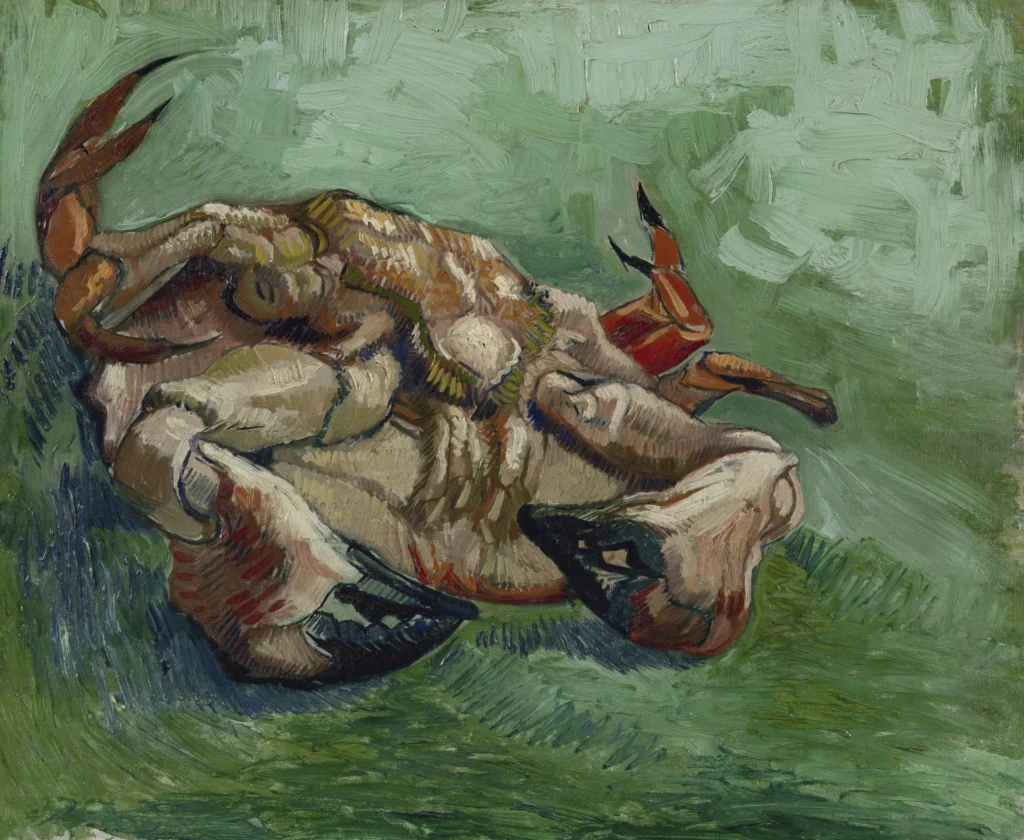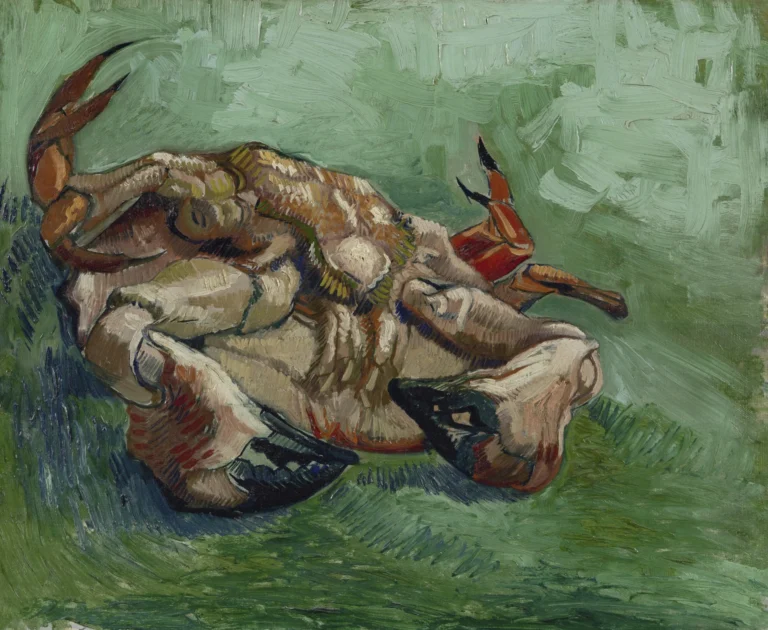Crab On Its Back (1888)
Created between August-September 1887 and early 1889, Crab on its Back epitomizes Vincent van Gogh's distinctive style and emotional depth. Set against a striking green backdrop, the boldly painted red crab acts as a vivid focal point, while the artist's brushwork blends techniques reminiscent of his Japanese inspirations. This artwork conveys more than a still life; it embodies vulnerability and endurance, reflecting Van Gogh's own tumultuous emotional state during its creation. Van Gogh's exploration of color relationships here invites viewers into his complex inner world.
August-September 1887 or early 1889
About the Artwork
Did You Know
Liked what you see? Add it to your collection.
Enjoyed reading? Share it.
... continued
Date and Location
The painting is dated to either August-September 1887 or early 1889, with the exact date being disputed. It is currently housed at the Van Gogh Museum in Amsterdam, Netherlands.
Inspiration
Van Gogh was inspired by Japanese prints, particularly a woodcut of a crab by the Japanese artist Hokusai, which he had seen in the magazine *Le Japon Artistique* sent to him by his brother Theo in September 1888.
Composition and Technique
The painting features a crab lying on its back against a deep green background. Van Gogh used bright shades of red for the crab, which contrasts with the green background, illustrating his experimentation with the 'laws of color' as described by Eugène Delacroix. This use of complementary colors (red and green) enhances the visual impact of the artwork.
Style and Brushwork
The crab is painted with bold and obvious brushstrokes, particularly in the background, which were executed quickly using a flat brush. The crab itself was painted with a narrower round brush, and in some areas, the lines are so fine they resemble watercolor brushwork.
Symbolism and Interpretation
The painting is not just a simple still life but also carries deeper meanings. The crab, with its hard shell and vulnerable underside, can be seen as a metaphor for vulnerability and endurance. This interpretation aligns with Van Gogh's own feelings and situation, reflecting his emotional state.
Related Works
Van Gogh also painted another still life, 'Two Crabs,' in 1889, which features two crabs, one of which is lying on its back, and is now on display at the National Gallery in London.










